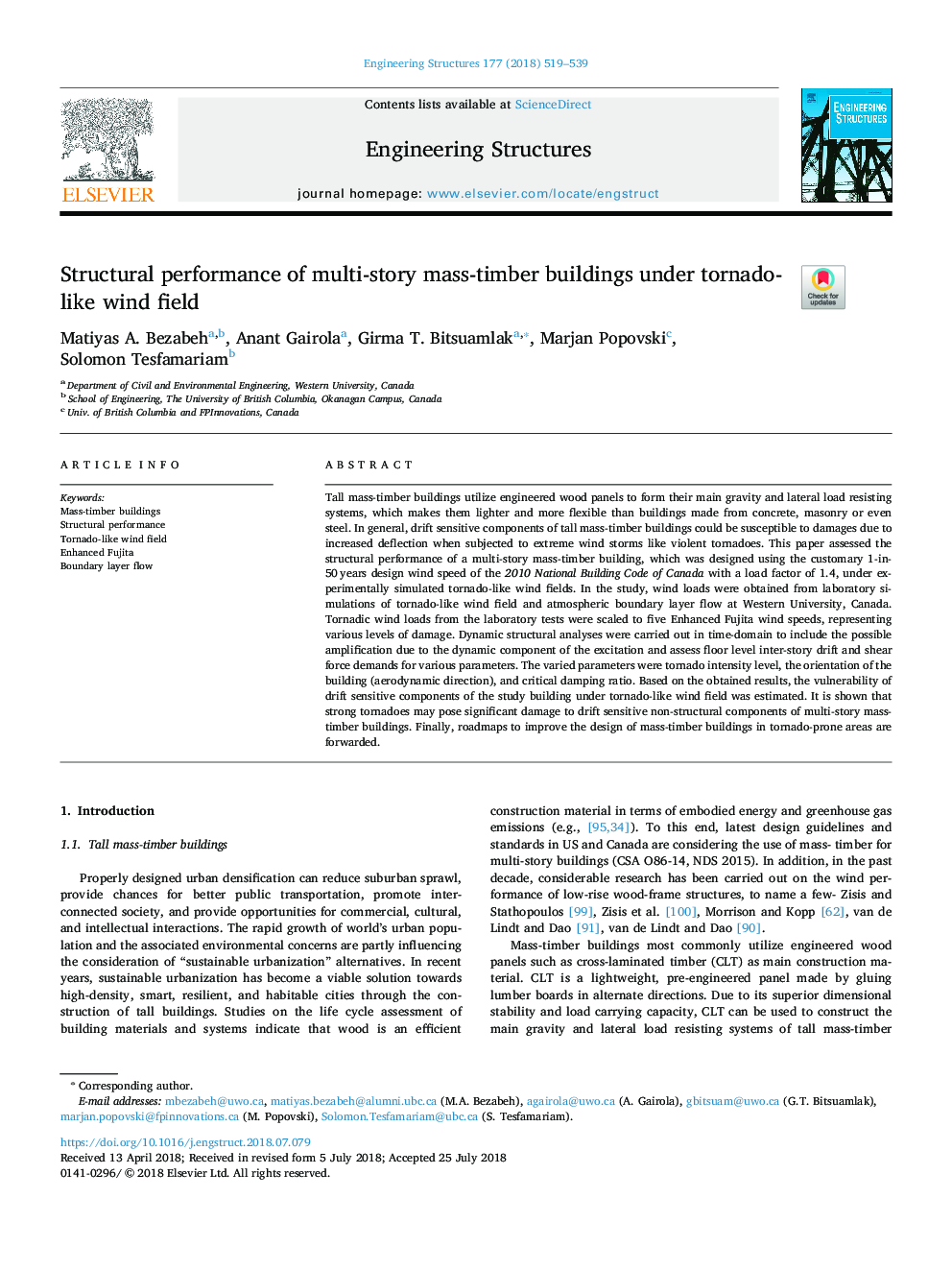| Article ID | Journal | Published Year | Pages | File Type |
|---|---|---|---|---|
| 11021350 | Engineering Structures | 2018 | 21 Pages |
Abstract
Tall mass-timber buildings utilize engineered wood panels to form their main gravity and lateral load resisting systems, which makes them lighter and more flexible than buildings made from concrete, masonry or even steel. In general, drift sensitive components of tall mass-timber buildings could be susceptible to damages due to increased deflection when subjected to extreme wind storms like violent tornadoes. This paper assessed the structural performance of a multi-story mass-timber building, which was designed using the customary 1-in-50â¯years design wind speed of the 2010 National Building Code of Canada with a load factor of 1.4, under experimentally simulated tornado-like wind fields. In the study, wind loads were obtained from laboratory simulations of tornado-like wind field and atmospheric boundary layer flow at Western University, Canada. Tornadic wind loads from the laboratory tests were scaled to five Enhanced Fujita wind speeds, representing various levels of damage. Dynamic structural analyses were carried out in time-domain to include the possible amplification due to the dynamic component of the excitation and assess floor level inter-story drift and shear force demands for various parameters. The varied parameters were tornado intensity level, the orientation of the building (aerodynamic direction), and critical damping ratio. Based on the obtained results, the vulnerability of drift sensitive components of the study building under tornado-like wind field was estimated. It is shown that strong tornadoes may pose significant damage to drift sensitive non-structural components of multi-story mass-timber buildings. Finally, roadmaps to improve the design of mass-timber buildings in tornado-prone areas are forwarded.
Related Topics
Physical Sciences and Engineering
Earth and Planetary Sciences
Geotechnical Engineering and Engineering Geology
Authors
Matiyas A. Bezabeh, Anant Gairola, Girma T. Bitsuamlak, Marjan Popovski, Solomon Tesfamariam,
